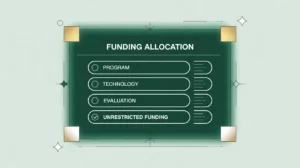Importance of IRS Form 990 (U.S.)
IRS Form 990 serves as the primary public disclosure document for U.S. nonprofits, providing transparency on finances, governance, and activities. This matters because it allows donors, regulators, and the public to evaluate accountability and stewardship. For nonprofits in social innovation and international development, Form 990 demonstrates how resources are raised and spent, offering insight into efficiency, executive compensation, and program priorities. Boards and leadership value it as both a compliance requirement and a tool for building public trust.
Definition and Features
IRS Form 990 is defined as the annual information return filed by most U.S. tax-exempt organizations with the Internal Revenue Service (IRS). Key features include:
- Financial Reporting: revenue, expenses, assets, and liabilities.
- Governance Disclosures: board composition, policies, and oversight practices.
- Program Service Accomplishments: descriptions of major activities and outcomes.
- Public Access: required to be made available to the public, often via nonprofit databases.
Form 990 differs from audited financial statements because it focuses on transparency and compliance with tax-exemption rules rather than assurance of accuracy.
How This Works in Practice
In practice, U.S. nonprofits file Form 990 annually, with variations depending on size (Form 990-EZ for smaller organizations). For example, a nonprofit with $5 million in revenue would file the full 990, disclosing program spending, fundraising efficiency, and compensation for top executives. Finance and compliance teams prepare the return, reviewed by leadership and approved by the board before filing. Donors, journalists, and watchdog groups often analyze 990s to assess organizational performance.
Implications for Social Innovation
For nonprofits in social innovation and international development, IRS Form 990 is a critical transparency mechanism. Public disclosure reduces information asymmetry by making financial and governance practices accessible to all stakeholders. Donors use it to assess credibility and alignment with their values, while nonprofits can showcase program achievements and commitment to accountability. By embracing accurate and complete Form 990 reporting, organizations strengthen their reputation, reinforce trust, and expand their capacity for systemic change.







